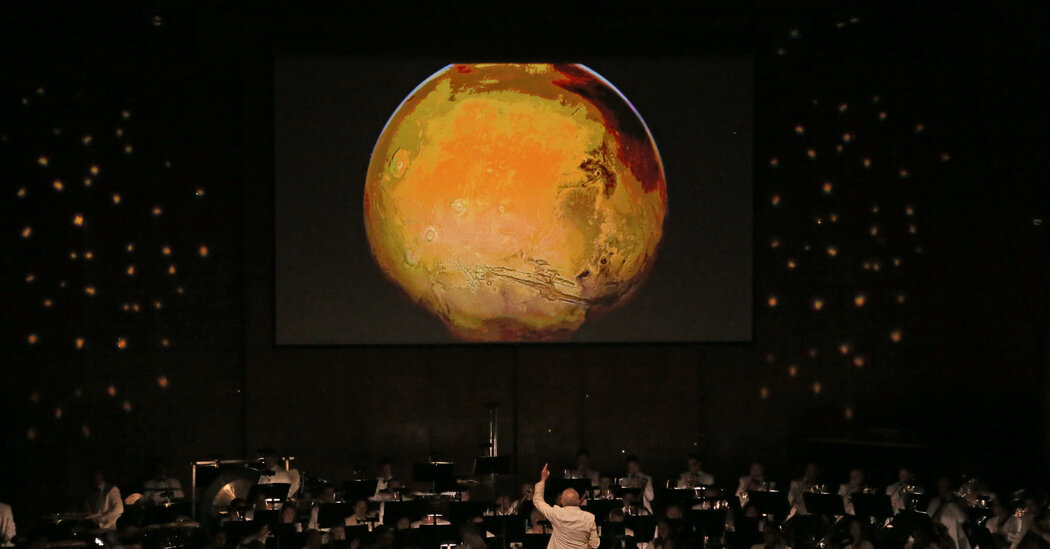Holst did find a solution to his competing ambition and physical incapability, and he left traces of it on the cover of the 1911 “Fairy Queen” program, which lists 28 copyists who worked for 18 months to copy some 1,500 pages of parts. “The Planets” was similarly bold, especially as a project undertaken during wartime. His pupil Jane Joseph commented that he “resigned himself to needing a vast orchestra which no one would be able to afford in wartime.”
To help with the preparation of “The Planets,” Holst enlisted Joseph, as well as Lasker and Day, who were both music teachers at St. Paul’s, to act as his amanuenses. Because the neuritis affected his writing hand in particular, Holst once described the women as his “three right hands”; Imogen Holst, the composer’s daughter, described their role in completing the 198 pages of the full score as “invaluable.”
There was no free time during the school week, so the writing of “The Planets” took place on weekends, with activity centered around the new, soundproof music room at St. Paul’s. (The space is still used as a music room today, with a placard that says “Mr. Holst’s Room” on the door.) Holst, seated away from the piano, would ask them to try out material, dictate parts of the score, or give orchestrational directions.
Some idea of what that environment was like can be found in a memoir that Lasker wrote for the school magazine, Paulina, in 1960:
He had his piano sketch, and with red ink, he wrote against each note which instrument played it. In another room, Jane Joseph, one of his pupils, worked on a different part of the score. As soon as she and Nora Day had done four pages — we were all working in the same building — they brought them to me in another room and I transcribed it for the piano. In six weeks we had done the whole lot. We all worked eight hours a day and I can’t imagine any other composer working in this way without any worry or loss of temper.
Sections of the “Planets” manuscript are available online via the Royal College of Music’s archives, and they clearly show a similar collaborative process in action. Written on the two-piano score in red ink are Holst’s instructions for orchestration; elsewhere, there are large sections crossed out, and notes in margins about whose handwriting is whose, and where that changes.
In 2009, the Holst scholar Alan Gibbs compiled a list of all of Lasker’s arrangements, for Holst and others. Included are multiple arrangements of “The Planets,” vocal scores of Holst’s operas “The Perfect Fool” and “At the Boar’s Head,” and amanuensis work on his “Japanese Suite.” There are also details of the similar relationship Lasker and Day had with Ralph Vaughan Williams, with arrangements for piano of his “London,” “Pastoral” and Fourth Symphonies, as well as his ballet “Job” and his Piano Concerto. These were made for a variety of purposes: rehearsals, demonstrations, performances, as a sounding board for ideas, as a way to persuade conductors and programmers to champion the work.
